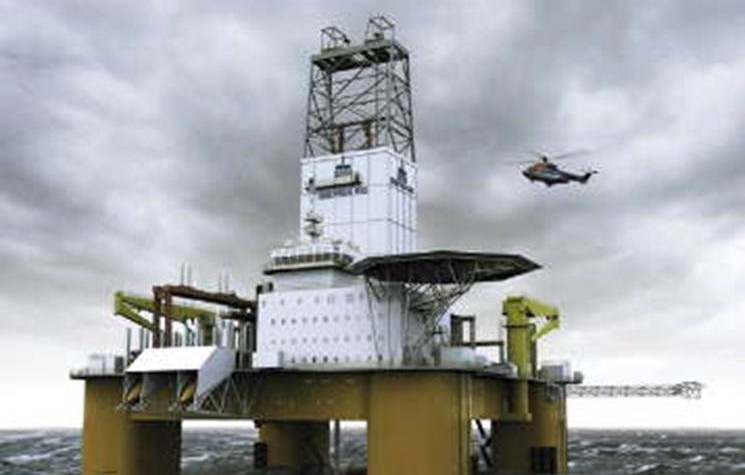Atlantic Petroleum expands Norwegian footprint and confirms Orlando is on track

By Amy McLellan
Atlantic Petroleum has added to its stock of licences in Norway, picking up two new tracts in the APA 2014 bid round. This takes the Faroe Islands-based company’s tally of licences in Norwegian waters to 10 just two years since its entry on the NCS.
The latest awards host mapped prospects close to nearby wells that have found hydrocarbons in the same geological play models.
In both cases, work commitments are relatively modest – no drilling until four years out if the licence is retained – and Atlantic is aligned with credible operators and heavyweight co-venturers, such as Statoil, Repsol and OMV.
PL796 lies on the prolific Halten Terrace near the Mikkel field, an area where 3D seismic has identified prospectivity in Upper Jurassic sandstones. There’s an existing discovery plus several leads and prospects. The project commits the Statoil-led group to some 3D seismic ahead of a drill or drop decision in two years’ time: Atlantic has a 20 per cent stake.
PL 802 lies in the Vøring Basin in the Norwegian Sea, immediately east of the Asterix gas discovery. There’s existing 2D and 3D data, with the main prospectivity identified in Upper Cretaceous sandstones similar to Asterix. The partners need to undertake G&G evaluation ahead of DOD in two years. Repsol operates with Atlantic holding 20 per cent.
This addition to the exploration base is good news as Atlantic Petroleum, which is listed on the Nasdaq OMX Copenhagen and the Oslo Stock Exchange, makes a virtue of staying busy with the drillbit to drive newsflow and expose shareholders to organic growth.
Until the slump in the oil price, it aimed to drill four or five exploration wells a year, both in Norwegian and UK waters: indeed, it ‘s a signal of the parlous state of UK exploration even before the price rout that a company of Atlantic’s size was among its most active drillers.
And, despite some disappointing wells, there have been enough material discoveries to justify the exploration spend: the recent Pegasus West gas discovery, for example, is seen as a valuable tool for the small cap, creating opportunities to trade or swap in order capitalise on the value of the find.
The Centrica-operated well, which lies in shallow waters close to existing infrastructure in the Southern North Sea, flowed at more than 90 million cubic feet per day, confirming Atlantic’s theory of a significant and relatively untested Carboniferous play in this area.
Now, with the fall in the oil price, the Tórshavn-based company has put the brakes on exploration spend, with the exploration budget slashed by 75 per cent to around DKK25-30 million (US$3.8 million -US$4.6 million) and the wells planned for 2015 pushed back into 2016.
“We have a bit of data acquisition in our plans and we are maturing our prospects for drilling in 2016 and beyond but there are currently no exploration wells planned for 2015,” CEO Ben Arabo tells Oilbarrel.
Atlantic has production from its interests in the Chestnut, Ettrick and Blackbird fields in the North Sea: this was running at an average of 1,806 boepd last month. Overall, the average over 2014 was 1,608 boepd, ahead of published guidance of 1,520 to 1,600 boepd.
This year production is expected to come in at 1,534 boepd. Capex for the year is set at DKK110 million (US$16.75 million), of which DKK80-85 will be committed to its production and development projects, most notably its Orlando development, which is due onstream in late 2016 and, with initial production of 2,600 boepd net, will deliver a material step change in volumes. Arabo points out that as a tie-back in a mature area, the Orlando development is profitable below today’s prices.
The company is forecasting EBITDAX of DKK 25 million at an average oil price of US$70 per boe. “We still make a bit of money below that (US$70 per barrel),” said Arabo, which is in contrast to many fields in the North Sea. “We don’t generate a lot of cash at prices in the US$40s per barrel. Our break-even price for our production is coming a bit down due to cost cutting, which means that our EBITDAX should improve.”
The company ended 2014 with net debt of DKK58 million and DKK135 million of cash. Ben Arabo said its good cash position and low debt is “a strength in these uncertain times”. And there are opportunities amid the price gloom: “Contractor costs are coming down across the board which means cheaper developments, cheaper rigs and, if companies have the cash, cheaper assets,” he said.
Comments (0)